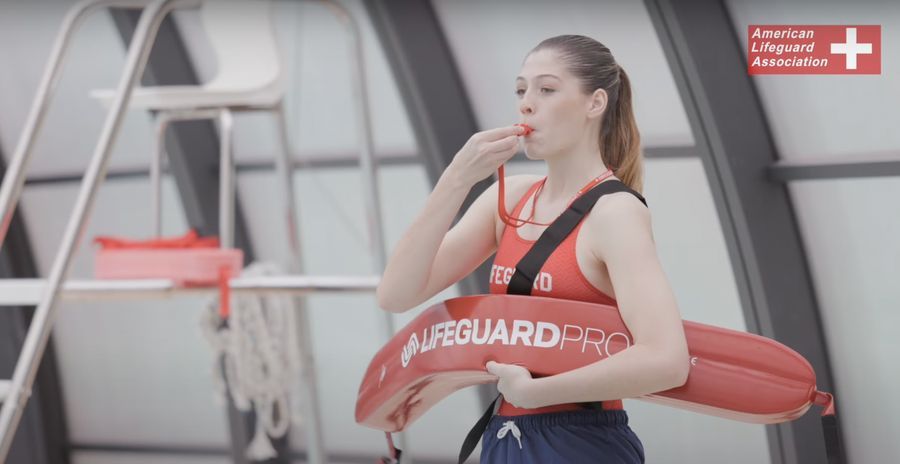Introduction
Lifeguarding is more than a job; it’s a vital public service. A lifeguard’s skills can mean the difference between life and death. However, those skills must be current and sharp to be effective. That’s where lifeguarding recertification comes into play. This post dives deep into the world of lifeguarding recertification, aiming to help American lifeguards stay prepared for any situation while keeping their certifications up-to-date. We’ll explore the importance of recertification, the steps involved, and how to make the process as smooth as possible.
The Importance of Lifeguarding Recertification
Keeping Skills Sharp
Lifeguards are entrusted with the safety of swimmers and beachgoers. To perform effectively, they need to maintain a set of skills that includes everything from basic first aid to advanced rescue techniques. Regular recertification ensures that lifeguards stay proficient in these life-saving skills.
Adapting to New Techniques
The field of lifesaving isn’t static. New techniques and equipment are constantly being developed to improve efficiency and effectiveness. Lifeguard recertification provides an opportunity to learn and practice these new methods, ensuring that lifeguards are always at the forefront of safety protocols.
Legal and Employer Requirements
Most states and employers require lifeguards to hold a current certification. This is not just a formality but a legal necessity. Being recertified helps lifeguards meet these requirements and continue working without interruptions.
Steps to Lifeguard Recertification
Assess Your Current Certification
Before you can recertify, it’s essential to know the status of your current certification. Check the expiration date and determine how much time you have left. Many organizations recommend starting the recertification process well before your current certification expires.
Choose a Recognized Certifying Body
Organizations like the American Lifeguard Association (ALA), the American Lifeguard USA offer reputable recertification programs. These organizations provide standardized training that is widely recognized and respected.
Register for a Recertification Course
Once you’ve chosen a certifying body, the next step is to register for a recertification course. These courses can vary in length and content, so choose one that fits your schedule and needs. Many courses are available both online and in-person.
The American Lifeguard Association (ALA)
Overview of ALA
The American Lifeguard Association is a leading organization in lifeguard training and certification. They offer a wide range of programs tailored to meet the needs of different types of lifeguards.
Why Choose ALA?
The ALA is known for its comprehensive training programs that cover all aspects of lifeguarding, from basic water rescue to advanced first aid. Their recertification courses are designed to be both thorough and convenient, ensuring that lifeguards can maintain their skills without significant disruptions to their schedules.
How to Get Started with ALA
To begin the recertification process with ALA, visit their website and browse through their available courses. They offer both online and in-person options, making it easy to find a course that fits your needs.
What to Expect in a Recertification Course
Refresher Training
Recertification courses typically start with a refresher on the basics of lifeguarding. This includes CPR, first aid, and water rescue techniques. Even if you feel confident in your skills, this refresher is crucial for maintaining proficiency.
Advanced Techniques
Many recertification courses also cover advanced techniques that may not have been included in your initial training. This could include spinal injury management, rescue breathing, and the use of automated external defibrillators (AEDs).
Practical Assessments
Most recertification courses include practical assessments where you must demonstrate your skills. These assessments ensure that you can apply what you’ve learned in real-world scenarios.
Common Challenges in Lifeguard Recertification
Time Management
Finding the time to complete a recertification course can be challenging, especially for those with busy schedules. However, many organizations offer flexible options, including weekend and evening courses.
Cost Concerns
The cost of recertification can also be a concern. Some employers may cover the cost, while others leave it up to the lifeguard. It’s worth exploring different programs to find one that fits your budget.
Physical Fitness
Maintaining the physical fitness required for lifeguarding can be challenging, especially if you’re not actively working in the field. Regular exercise and swimming practice can help you stay in shape and ready for the physical demands of the job.
Benefits of Lifeguard Recertification
Enhanced Confidence
Being recertified can boost your confidence in your abilities. Knowing that your skills are up-to-date and that you’re prepared for any situation can make you a more effective lifeguard.
Career Advancement
Many employers prefer to hire and promote lifeguards who regularly update their certifications. Staying current can open up opportunities for advancement within your organization.
Personal Fulfillment
There’s a sense of personal fulfillment that comes from knowing you’re capable of saving lives. Recertification ensures that you continue to be a valuable asset to your community.
Tips for a Smooth Recertification Process
Start Early
Don’t wait until your certification is about to expire before starting the recertification process. Give yourself plenty of time to complete the necessary coursework and assessments.
Stay Informed
Keep up-to-date with the latest developments in lifeguarding techniques and equipment. This can make the recertification process smoother and more enjoyable.
Practice Regularly
Even when you’re not working, try to practice your lifeguarding skills regularly. This will make the recertification process easier and ensure that you stay proficient.
Resources for Lifeguards
Online Communities
Joining online communities of lifeguards can provide support and information. Websites and forums dedicated to lifeguarding can be valuable resources for tips and advice.
Professional Organizations
Organizations like the American Lifeguard Association offer a wealth of resources, including training materials, updates on the latest techniques, and networking opportunities.
Local Training Centers
Many local training centers offer recertification courses and other resources. These centers can provide hands-on training and support throughout the recertification process.
Would you like to read: Your Trusted Dental Clinic – The Tooth Care
Final Opinion
Staying current with your lifeguarding certification is essential for ensuring the safety of those you protect. By understanding the importance of recertification, choosing a reputable certifying body, and following the steps outlined in this guide, you can maintain your skills and continue to be a valuable asset to your community.
Remember, your dedication to staying prepared can make all the difference in an emergency situation. If you’re ready to start your recertification process or need more information, consider reaching out to the American Lifeguard Association or another trusted organization. Your commitment to excellence in lifeguarding is not only commendable but essential. Keep swimming, keep saving lives, and keep making a difference.




